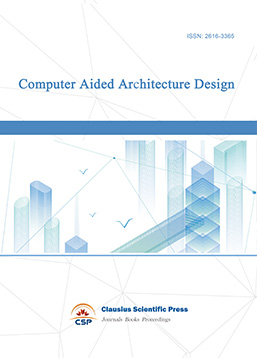Application of BIM5D Technology in the Construction of Super High-Rise Buildings
DOI: 10.23977/jceup.2024.060302 | Downloads: 83 | Views: 1669
Author(s)
You Li 1, Hui Zhong 2
Affiliation(s)
1 School of Architecture and Engineering, Guangxi Mechanical and Electrical Vocational and Technical College, Nanning, Guangxi, China
2 Laibin Tobacco Monopoly Bureau, Laibin, Guangxi, China
Corresponding Author
You LiABSTRACT
Super high-rise buildings are iconic landscapes of modern cities, but they face technical challenges in design, construction, and use. Building Information Modeling 5 Dimensions (BIM5D) technology, as an integrated data management platform, provides new solutions for the construction of super high-rise buildings by combining three-dimensional geometric models, time, and cost dimensions. This article first introduces the BIM5D technology framework, including its quantitative analysis methods in construction cost, time, and risk management. Subsequently, it explored the construction and integration process of the BIM5D model, as well as the application of construction simulation and visualization technology in project management. The experimental results show that BIM5D technology significantly improves construction efficiency, with a minimum project productivity of 62 square meters per day. In terms of quality control, the construction qualification rate is as high as 98.9%, reducing errors and rework during the construction process. In terms of cost savings, the highest savings reached 4.53 million USD, demonstrating the potential of BIM5D technology in cost management. Compared with traditional construction methods, BIM5D technology has shown significant advantages in multiple key performance indicators, including shortened construction cycles, improved labor productivity, and reduced material waste.
KEYWORDS
BIM5D Technology, Super High-rise Buildings, Construction Management, Cost Control, Construction Efficiency, Quality ControlCITE THIS PAPER
You Li, Hui Zhong, Application of BIM5D Technology in the Construction of Super High-Rise Buildings. Journal of Civil Engineering and Urban Planning (2024) Vol. 6: 10-18. DOI: http://dx.doi.org/10.23977/jceup.2024.060302.
REFERENCES
[1] Tian Wei, Ma Junjie, Zhang Xuqiao, Cheng Loufeng. Research on the control technology of vertical deformation difference in the construction process of super high-rise buildings [J].Architectural Structure, 2024, 54(2):41-46.
[2] Ren Hao, Wang Xianjie, Zhang Linfei, Weng Zhenjiang, Gao Xuelian, Chen Yongdang. Fire prediction, fire simulation and evacuation of personnel in the construction of super high-rise buildings [J].Science, Technology and Engineering, 2024, 24(12):5114-5122.
[3] Xu Ping. Research on monitoring technology of the whole process of construction of super high-rise buildings [J].Construction, 2024, 46(3):354-356.
[4] Ma Zhipeng, Feng Huailing, Wu Dawei. Research on the technology of push-pull sliding protective shielding frame for the construction of super high-rise buildings [J].Construction, 2024, 46(5):770-772.
[5] Xiang Miao, Xu Liang, Wang Daqing. Analysis of the seismic effect of supporting pressure-bearing structures in deep foundation pits in the construction of super high-rise buildings [J].Construction, 2023,45(1):209-212.
[6] Szołomicki J, Golasz-Szołomicka H. Analysis of technical problems in modern super-slim high-rise residential buildings [J]. Budownictwo i Architektura, 2021, 20(1): 083-116.
[7] Wu X, Guo Z, Liu L, et al. Seismic monitoring of super high‐rise building using ambient noise with dense seismic array[J]. Seismological Research Letters, 2021, 92(1): 396-407.
[8] Ilgın H E. Space efficiency in contemporary supertall residential buildings[J]. Architecture, 2021, 1(1): 25-37.
[9] Kalantari S, Shepley M. Psychological and social impacts of high-rise buildings: A review of the post-occupancy evaluation literature[J]. Housing studies, 2021, 36(8): 1147-1176.
[10] Bazhenov Y, Murtazaev S, Bataev D, et al. High-strength concretes based on anthropogenic raw materials for earthquake resistant high-rise construction[J]. Engineering Solid Mechanics, 2021, 9(3): 335-346.
[11] Kun P, Esa M, Munianday P. Optimizing Construction Cost Control through BIM5D Digitalization: A Case Study on the Application of Glodon Software in China[J]. Journal of Advanced Research in Applied Sciences and Engineering Technology, 2023, 32(2): 487-507.
[12] Cao Y, Wu X, Feng Z, et al. Research on Collaborative Management of Project Safety and Quality Based on BIM 5D [J]. Journal of Information Technologyin Civil Engineering and Architecture, 2024, 16(1): 116-121.
[13] Roman A, Andrii S, Galyna R, et al. Integration of data flows of the construction project life cycle to create a digital enterprise based on building information modeling[J]. International Journal of Emerging Technology and Advanced Engineering, 2022, 12(1): 40-50.
[14] Ershadi M, Jefferies M, Davis P, et al. Implementation of Building Information Modelling in infrastructure construction projects: a study of dimensions and strategies[J]. International Journal of Information Systems and Project Management, 2021, 9(4): 43-59.
[15] Z Lv, X Li, H Lv and W Xiu. BIM Big Data Storage in WebVRGIS. IEEE Transactions on Industrial Informatics, 2019, 16(4): 2566-2573.
| Downloads: | 12279 |
|---|---|
| Visits: | 441008 |
Sponsors, Associates, and Links
-
Journal of Sustainable Development and Green Buildings

-
Landscape and Urban Horticulture

-
Bridge and Structural Engineering

-
Soil Mechanics and Geotechnical Engineering

-
Journal of Municipal Engineering

-
Heating, Ventilation and Air Conditioning

-
Indoor Air Quality and Climate

-
Computer Aided Architecture Design


 Download as PDF
Download as PDF